Unless you’ve been living under a rock, I guess you’ve heard about customer retention through chatbots.
The question is: do they really work?
Yes.
And I have proof.
But, before we get into the facts, take a look at this image:
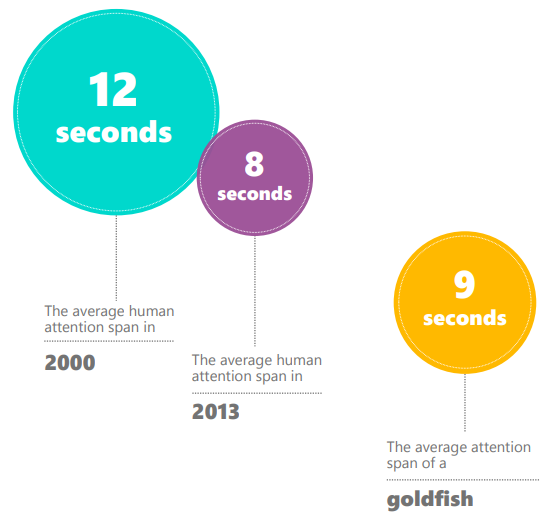
In 2015, Microsoft found that users had an attention span of just 8 seconds, which is less than the average attention span of a goldfish.
An even more surprising (and recent) study suggests that the number is narrowing.
We live in the age of universal information and customers are growing tired of it. Each day, they’re overloaded with new courses, new ads, new product launches, and new everything.
What does this mean for you?
In an age where every brand is competing for attention, even if you have a solid marketing strategy for your website, the only way to stand out is to shift your focus from getting attention to earning the trust of your customers.
Here’s where chatbots come in.
Let’s discuss why…
Why trust is more profitable than attention
It’s easier and cheaper to drive sales from repeat customers than it is to acquire new ones.
Once existing customers trust your brand, they’re more likely to return.
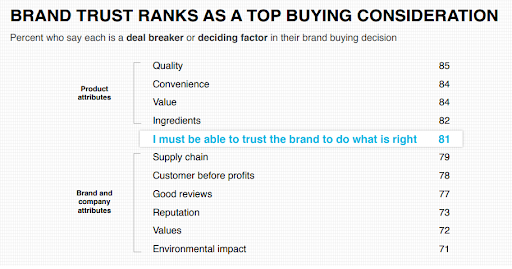
Take a look at eCommerce retail giants like Amazon, for example. The company spent decades building audience trust, and, as a result, direct traffic to the site makes up 57% of its total traffic — a strong indication that many online shoppers start their purchasing journey on Amazon.
But building long-term relationships with your audience doesn’t happen overnight (if only it were that easy). So how can you increase customer retention?
Improving your customer service is a good place to start.
This is easier said than done, of course, but the reality is customers are unlikely to return if your business delivers poor customer service. Using chatbots can improve the customer experience and drive more sales. Improving customer experience through customer support has proven to increase revenue up to 15% while also boosting customer satisfaction by around 20%.
That said, let’s look at why chatbots are the future of customer retention, as well as a few practical tips you can implement into your online operations.
Why chatbots are key to customer retention
Chatbots are programs powered by artificial intelligence (AI) software, and simulate digital conversations, using natural language processing (NLP), with users through websites and messaging applications. NLP helps chatbots understand customer questions and requests and reply back to messages with the appropriate response (think Siri and Alexa).
If you’ve ever reached out to a company for help, there’s a good chance you’ve interacted with a chatbot development. The use of bots is accelerating at a rapid pace. Global revenue from the chatbot market is expected to reach an estimated $454.8 million dollars by 2027 (up from $40.9 million in 2018).
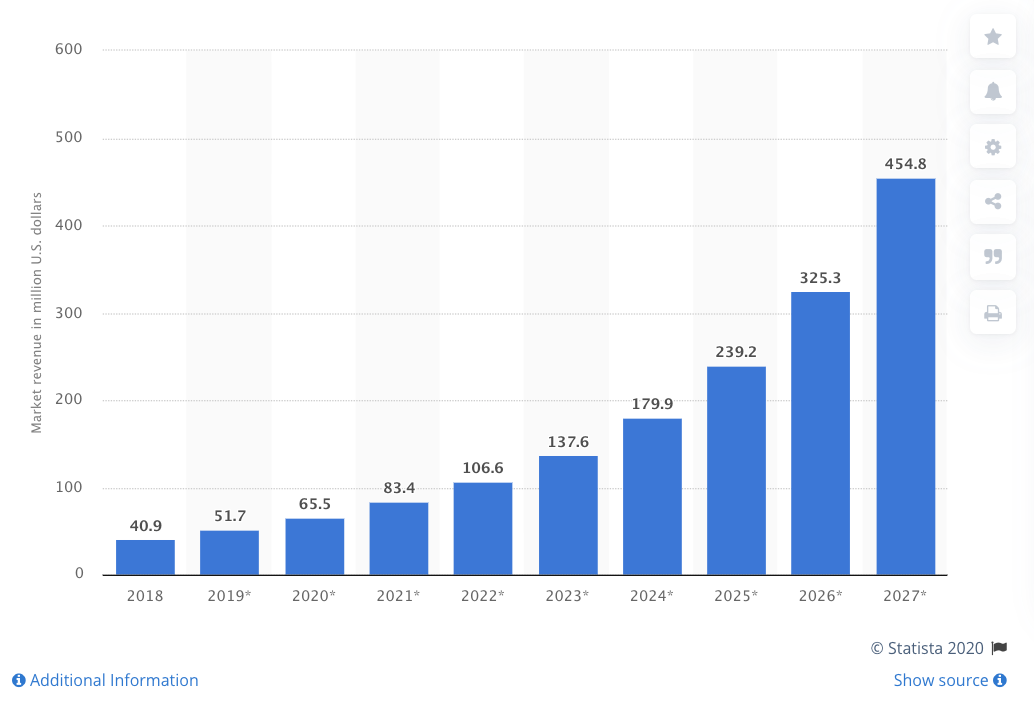
The driving force behind this growth is quite simple — chatbots help companies provide better and faster customer service at scale.
Let’s take a closer look at the major reasons why chatbots are the future of customer retention.
Faster response times
We live in a hyper-connected world: Social media platforms like Facebook provide updates in real-time, and eCommerce platforms like Amazon let you choose same- or next-day delivery
The result of this connectivity? Consumers today are increasingly impatient, and even the slightest shipping delay can create unpleasant shopping experiences.
The same also holds true for customer service. An estimated 90% of consumers rate immediate responses as important when they have a customer service question.
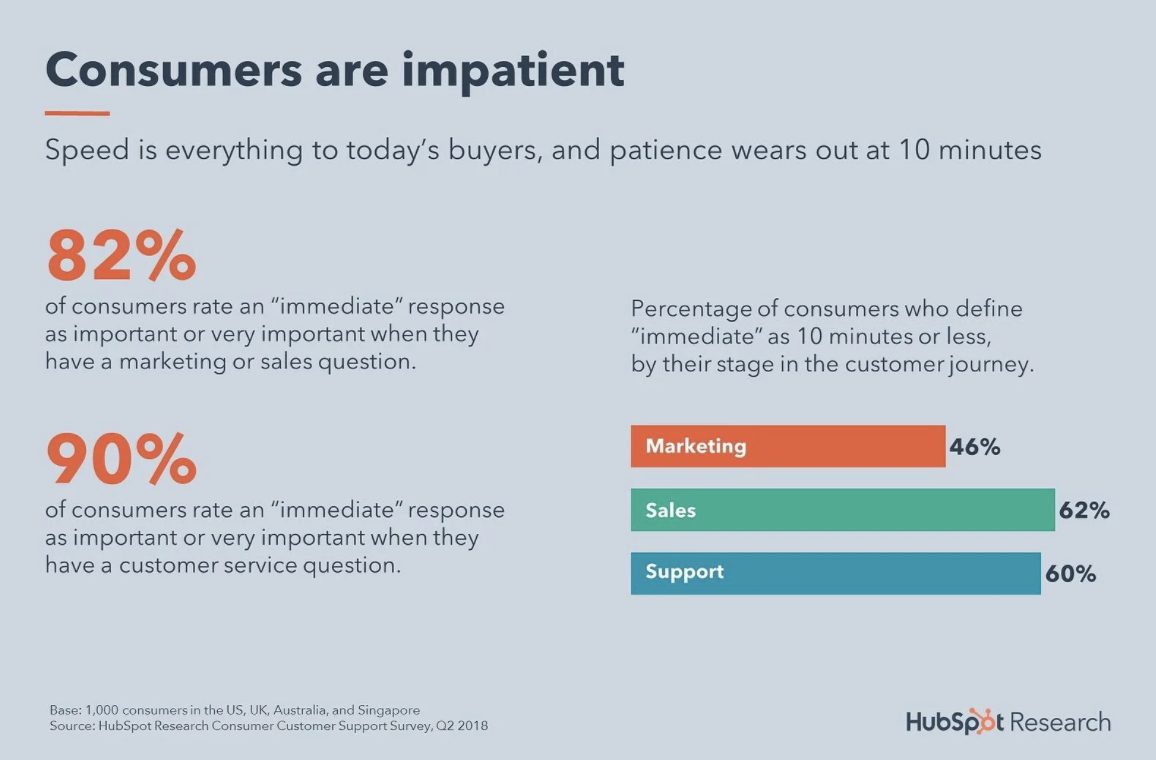
But what counts as “immediate”? According to Hubspot’s research, it’s 10 minutes or less.
Faster response times are ideal as two-thirds of consumers say that waiting for customer service is the most frustrating aspect of online shopping.
Customers today want quick answers and they want them now. Fail to meet those expectations and your customers likely won’t come back.
That’s where chatbots come in handy. Visitors on your site can interact with a chatbot and quickly get help with any customer service inquiries they might have.
Chatbots even help companies get more online bookings. A Facebook chatbot is an ideal example of such a case.
24/7 availability
Customers may not be able to get help if your customer service team only operates during local business hours, and it’s impractical for your customer service team to schedule virtual meetings with every single customer. And if they can’t get help, they’ll likely look for an alternative, causing you to lose a sale. Plus, they are able to operate globally and respond in various languages, think of it as a self-service translation service.
Many companies already offer 24/7 customer support—even provide FAQ pages and create explainer videos, but handling queries around the clock isn’t exactly cheap and requires substantial resources.
Chatbots are a more cost-effective solution and allow you to respond to customers 24 hours a day, 7 days a week. So whether it’s early in the morning or way past midnight, customers can always get the information they need. In fact, 64% of online users say that 24-hour service is the biggest benefit of chatbots customer services reps. For example, this trial attorney’s office offers a 24/7 chatbot with a real person responding on the other side of the screen.

Enhanced artificial intelligence
Understanding customer needs is key for growing a successful business, and allows you to deliver even better customer experiences. (Customers are willing to pay up to a 16% premium on products and services just by meeting and understanding their needs.)
Chatbots today are able to understand more complex queries, which allows them to detect intent and engage customers.
Propel PLM has a chatbot that redirects customers based on their intent. If they are just browsing, the chatbot will recommend other interesting articles and blog posts. While reading this article about value chains on their blog, the chatbot will recommend other relevant articles.
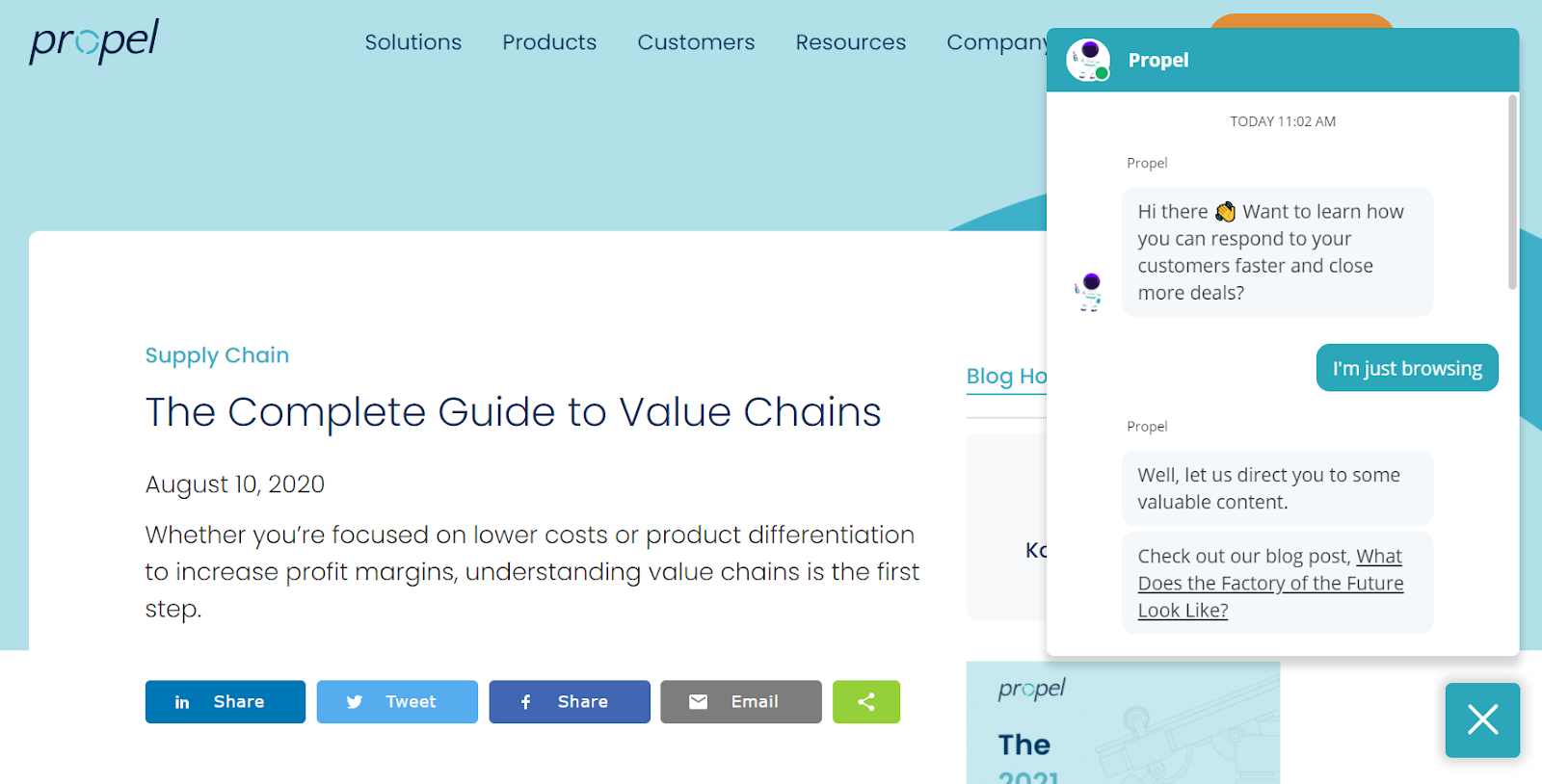
Personalized shopping experiences
Yet another reason why chatbots are the future of customer retention is their ability to deliver more personalized shopping experiences. A good example of this is the recommendation engine Amazon uses to display products based on customers’ order history.
But you don’t have to be as big as Amazon to take advantage of this technology. For instance, if you had an educational company that built online courses for a particular niche, having the ability to customize the recommendations your students get based on prior purchases could be extremely beneficial.
Personalization helps businesses deliver more relevant offers on their landing pages. A survey from McKinsey & Company, a management consulting firm, found that 80% of consumers want personalized experiences.
Luckily, chatbots aren’t limited to providing just customer support. They can be used to welcome back returning customers and help them make purchasing decisions. And depending on users’ responses, bots can direct customers to the appropriate product page to make a purchase. And if customers are interested in learning more about a topic, your bot can provide links to relevant guides and tutorials on your site.
For example, Breadcrumbs has a chatbot that asks different questions depending on what pages you are visiting on their site. For their email verifier feature, the bot is for example asking if you are “looking for your best leads”.
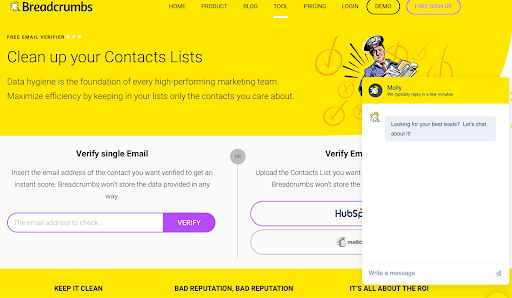
More customer insights
Soliciting customer feedback is always valuable. Not only does it show you value customers’ opinions, but it also lets you know where you can improve.
In addition to customer retention, chatbots are great for garnering user feedback. By understanding your customers, you can anticipate and remove any obstacles that might stand in the way of them completing another purchase.
Roughly 73% of customers expect companies to understand their needs, so use chatbots to get feedback from your customers.
Here’s an example of how IKEA uses its chatbot to gain customer insights.
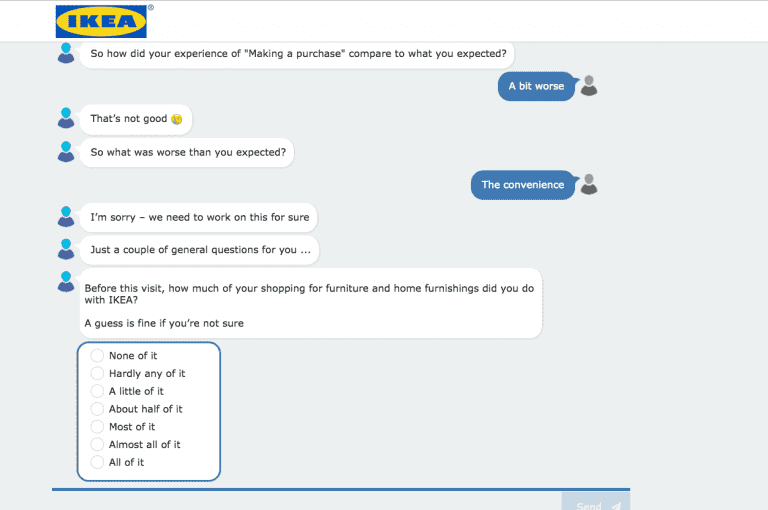
IKEA can identify areas of improvement with these insights. In this case, it looks like the furniture brand needs to make it easier for its customers to complete a purchase.
Lower operational costs
Being responsive to your customers is key to increasing retention, but if you’re a growing business, you might not have the resources to bring on and train a team of customer support representatives. And even then, support teams can only handle so many requests at a time.
Chatbots reduce operational costs by speeding up response times, allowing support teams to focus on more complex issues.
A study from Juniper Research predicted that chatbots will save businesses $8 billion by 2022. That figure is only expected to grow as more industries use chatbots to streamline customer service. Using one in your own business means lower overhead costs and increased profits.
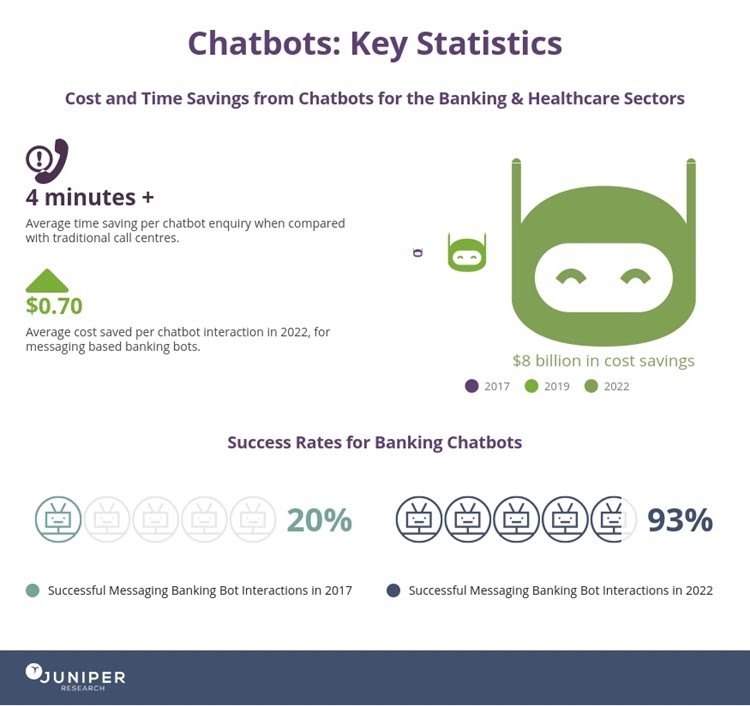
So far we’ve looked at the what of chatbots and the value they provide. Now let’s look at the how — how you can use them to increase customer retention.
How to use chatbots to increase customer retention
Customers have more choices than ever before, so if they’re not satisfied with your product or service, they can simply search for other alternatives. The same is equally true if the customer service you provide fails to meet their expectations.
To increase customer loyalty, you need to focus on their needs. Whether you’re an eCommerce business or a service provider, here’s how you can use chatbots to increase customer retention and close more sales.
1. Automate customer support
Chatbots are essentials for customer service and provide relief to your teams because they can be automated.
Most of the questions going through chatbots are product questions. Answering inquiries like “What is your refund policy?” or “What is the status of my order?” over and over again just isn’t the best use of your support team’s time when they could be focused on other tasks instead.
Instead of having someone from your customer service team answer these questions, program a bot to automatically respond with optimized content. This gives your team more time to handle more complex projects than trying to retain customers who are waiting for an answer.
Take a look at the following example of how Preply automates customer support.
In Preply’s chat window, customers have the option to search for articles in their extensive knowledge base before contacting support, streamlining the process.
2. Provide helpful resources
Visitors to your site might have additional questions or they may need help with a purchasing decision; this can especially be the case if you offer similar products with different features.
Chatbots can be programmed to provide visitors with helpful resources, including redirect links to tutorials or relevant educational articles on your site.
You can also program them to provide helpful resources to your visitors as Joy Organics does.
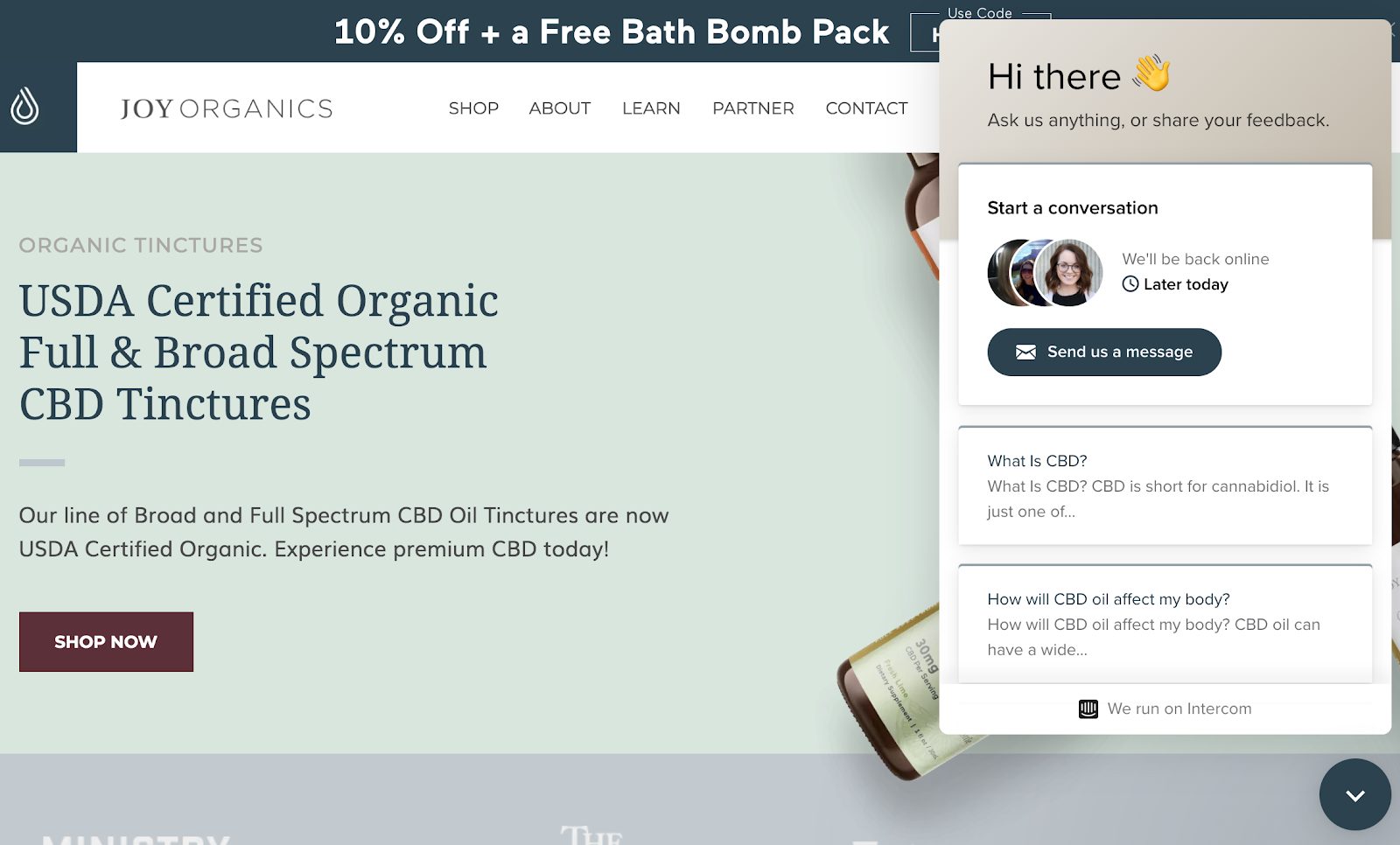
Users can click on Joy Organics’ provided resources to get more information on certain topics; and if they have additional questions, they can always start a conversation with the support team. The content shared by the chatbot must be free from grammatical errors. Run down the content through a tool like Grammarly or GrammerCheck
3. Include a photo
Chatbots can be scary when you don’t know who’s answering on the other side. If visitors have questions but think a robot will answer the chat, they might leave.
Adding photos of your customer support team will reduce the apprehension of using a chatbot and receiving automated answers.
Check out how GoAura adds photos to their chatbot.
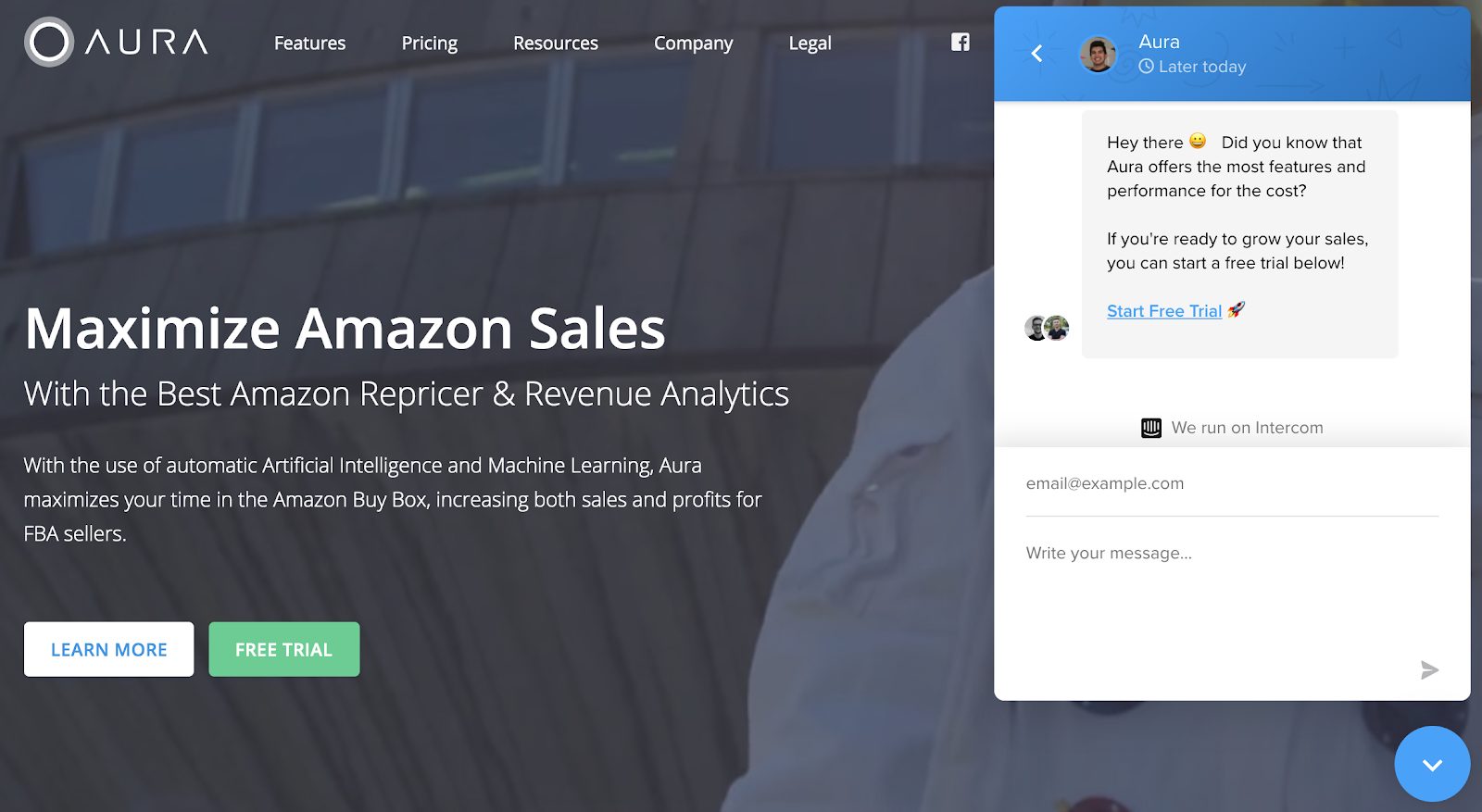
Adding a photo gives a more personal touch to your chatbot, which makes customers more likely to use them because they can “see” who’s on the other end.
4. Provide fast responses
As mentioned before, a common customer pet peeve is having to wait for customer support. Customers today simply don’t want to wait to get help, especially if they’re experiencing issues with your products or services.
Therefore, your customer chat function should feature an expected wait time for a response. This lets customers know how long they can expect to wait and if they should return later in the day.
In this example from Reply, the sales platform displays when the next member of the customer support team will be online.
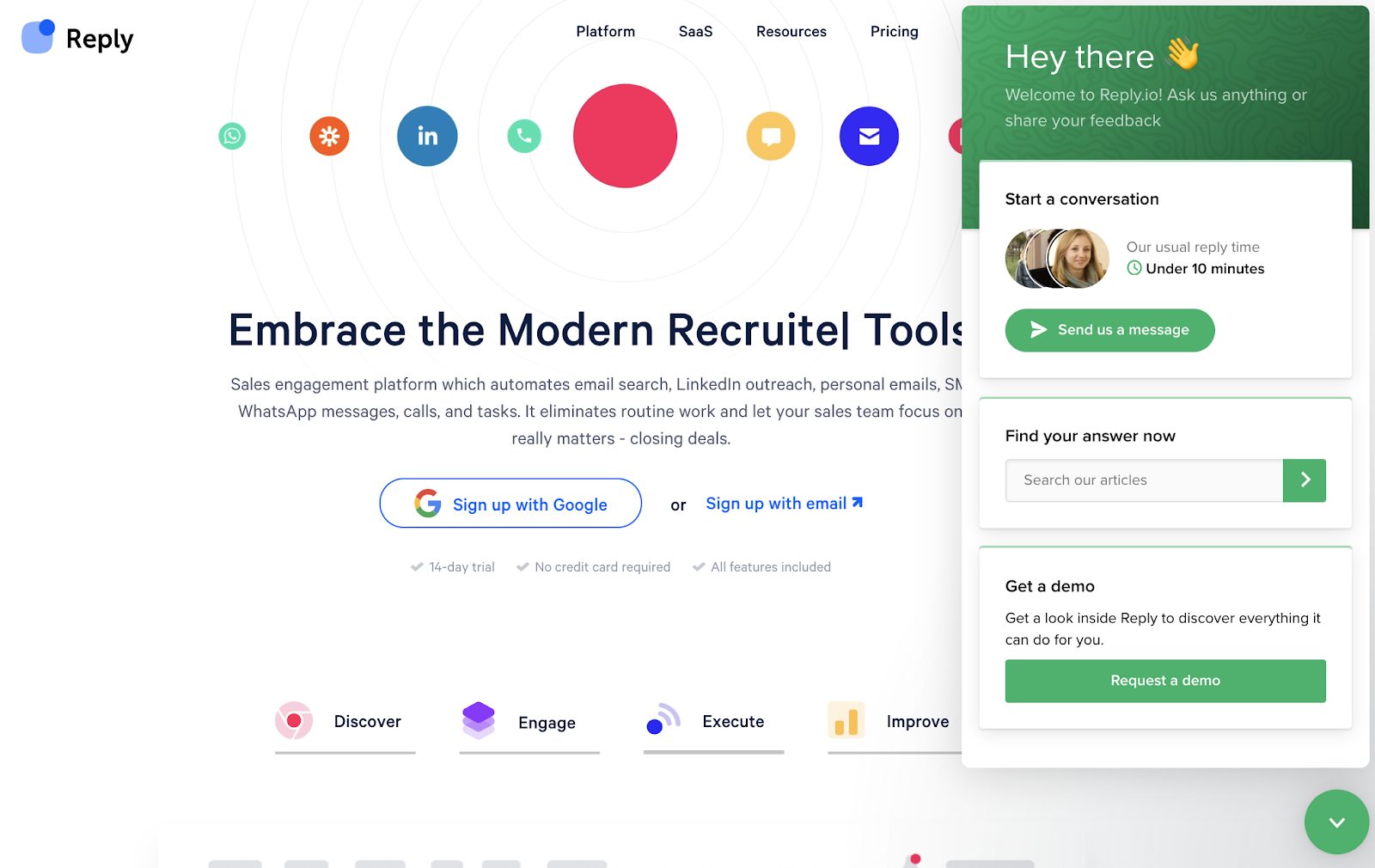
Thanks to this feature, visitors know exactly when they can expect a response from Reply’s team; choosing to wait for a response or returning later for assistance.
If your customer support team isn’t available 24 hours a day, displaying an “away” message and giving customers the option to provide their email and query is a good approach, just like Frevvo does with its workflow automation software.
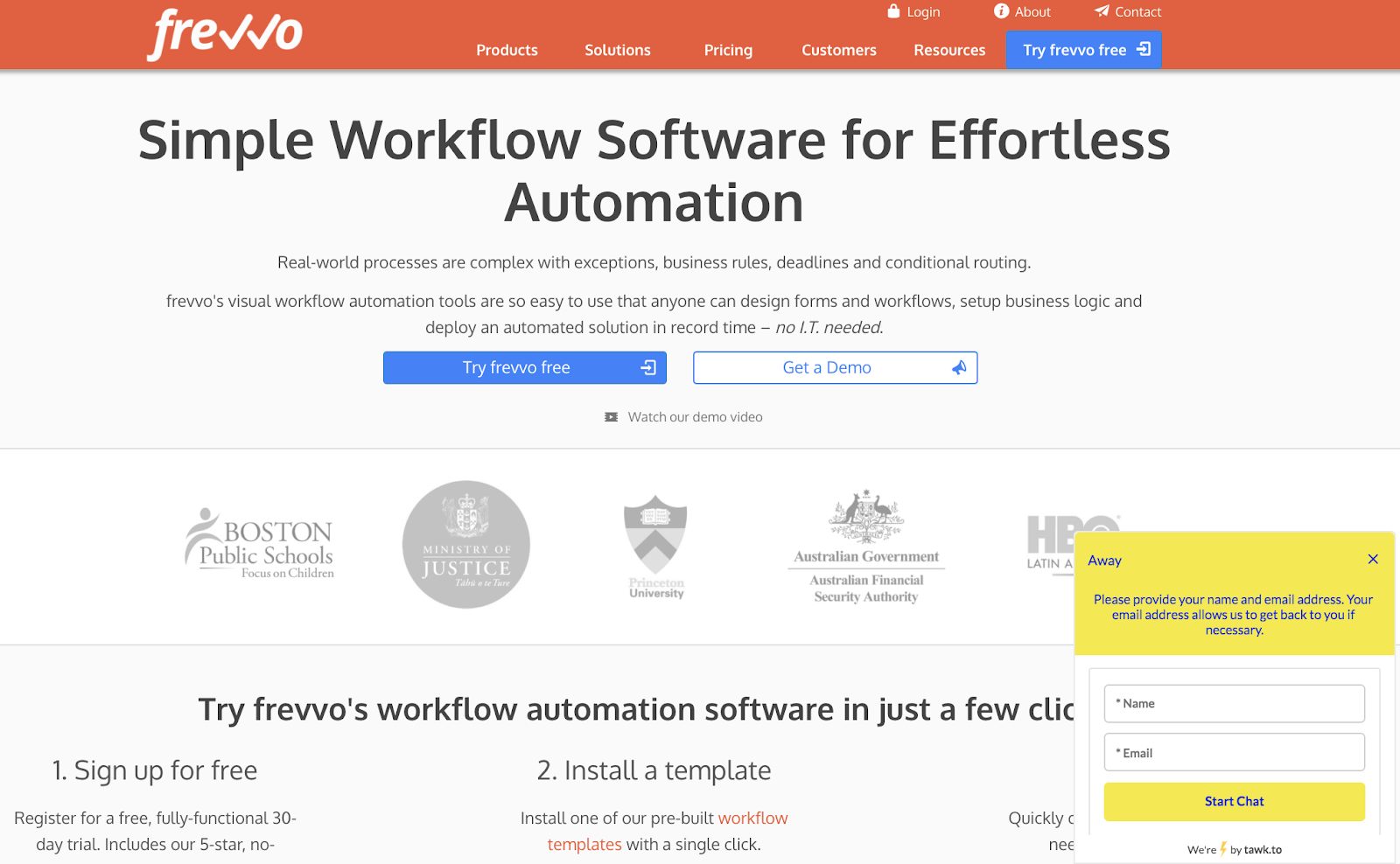
Thanks to the away message, customers know that someone will get back to them during office hours.
Another idea to integrate with your chatbot is to offer a texting option for direct support via phone, but the operation starts on your website. This treatment center in New York is a great example of that strategy
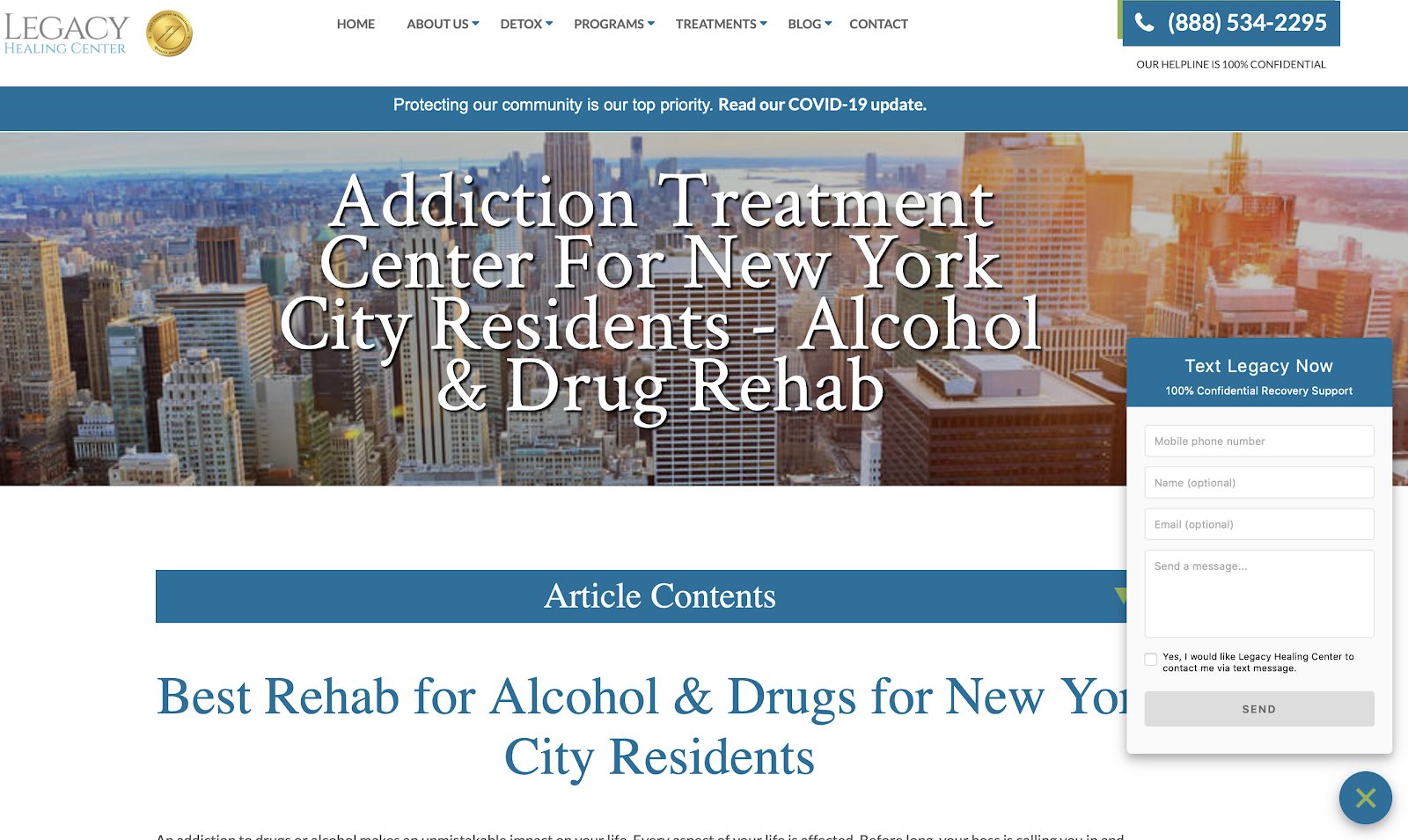
This strategy is mostly used in the health industry. Indeed, it is easier to talk via phone to a patient than on a live chat. But starting the conversation on your website will always be the fastest way to get more patients. Here’s another example with BetterAddictionCare which is also using the text approach to get in touch with potential patients.
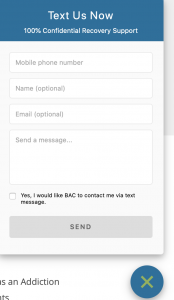
5. Have a backup plan
While chatbots can streamline customer support and increase retention, it’s important to have a backup plan in case visitors are unable to get the help they need. A survey of more than 1,000 U.S. consumers found that 86% still prefer interacting with a real person. Don’t hesitate to send a welcome email or call them, just to name a few ideas.
It’s perfectly acceptable to have chatbots provide helpful resources and answer frequently asked questions, but you should also give customers the option to reach a customer service representative.
If a bot doesn’t understand a query, program it to redirect users to a live person, allowing your support team to assist customers with more complex issues or make use of any email management and marketing tools they have in place.
Conclusion
Customer retention is absolutely essential for every business. Loyal customers are ultimately more profitable as they tend to spend more money on a trusted brand, and more likely to spread the word about your business, which, in turn, means free marketing.
But retaining customers isn’t exactly easy. If you fail to meet their expectations or deliver customer service in a timely manner, your customers are likely to look for other alternatives.
One way to increase customer retention is with chatbots. These AI-powered programs allow you to provide fast response times and can even be programmed to help your customers make purchases or schedule appointments.
If you’re looking for a chatbot to grow your business and engage your customers, then get started today with Botsify. Our platform makes it easy for customers to reach you, and getting started is easy with our drag-and-drop interface and templates.
And should you have any questions, don’t hesitate to get in touch with our team.

